A sales return is when a consumer or client sends a product back to the vendor. A client may return an item to the owner for a variety of reasons. Sometimes it results from variations in personal preferences or from a customer's discontent with a product. A corporation must create a return policy and refund for customers in order to streamline the sales process. Installing Odoo ERP software allows a business to handle sales returns of merchandise to clients. You can manage sales returns and refunds in an organization with the help of the Odoo 18 Sales module.
With the return process Odoo18 introduced something more to enhance the sales process, which is an Exchange. In a product exchange, the undesirable item is returned, and a new sales order or delivery is made for the replacement. Throughout these procedures, the system automatically modifies accounting entries and stock levels. Returns and exchanges may be handled effectively and transparently with the help of configurable procedures and return policies.
Create a new sale order, for that opens the Sales module first. The dashboard shows a list of quotations with sequence number, Creation Date, Salesperson, Activity, Company, Total and Status. Click on the New button to add a new one.
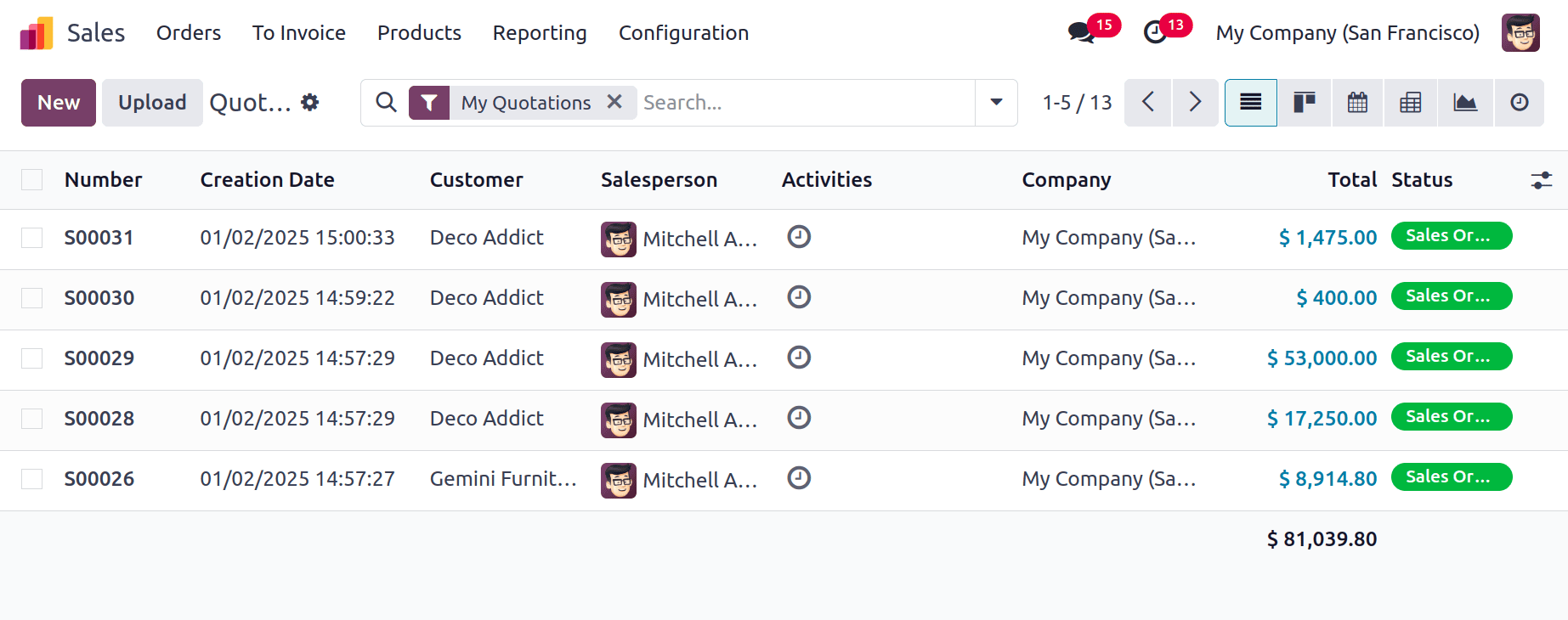
In a quotation, the name of the customer is first specified. Add the other details: Expiration date, Quotation Date, Pricelist, Payment Terms etc. the Expiration date is the validity of the orders; after that, the user will not be able to sign and pay the quotation. Quotation Date is the creation date of the draft/send quotations.
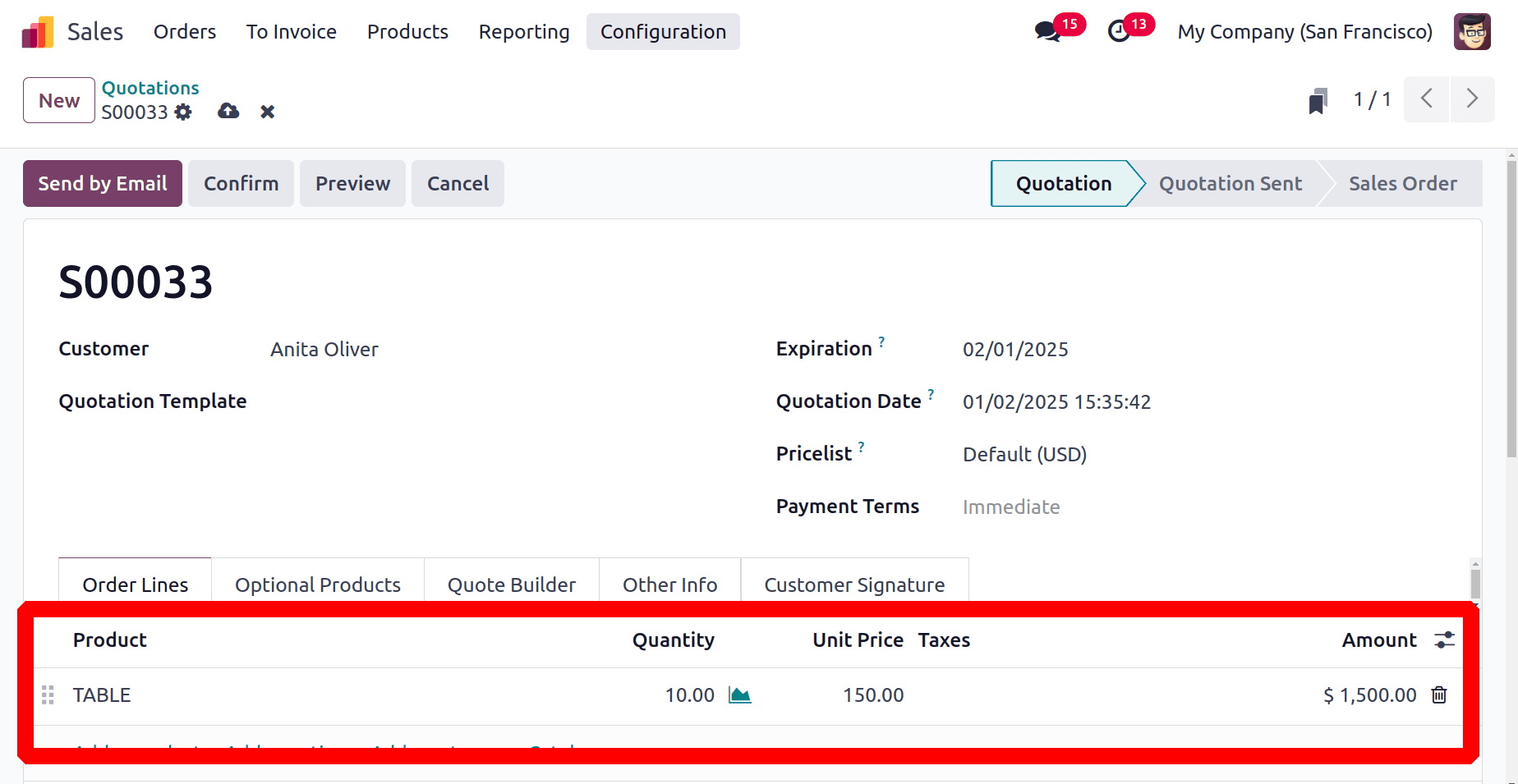
The Order Lines shows the product. The customer is Anita Oliver and the customer chose a product TABLE with 10 quantities. The unit price of the product is $150. After checking all, confirm the quotation. After that, the stage will change from Quotation to Sale Order.
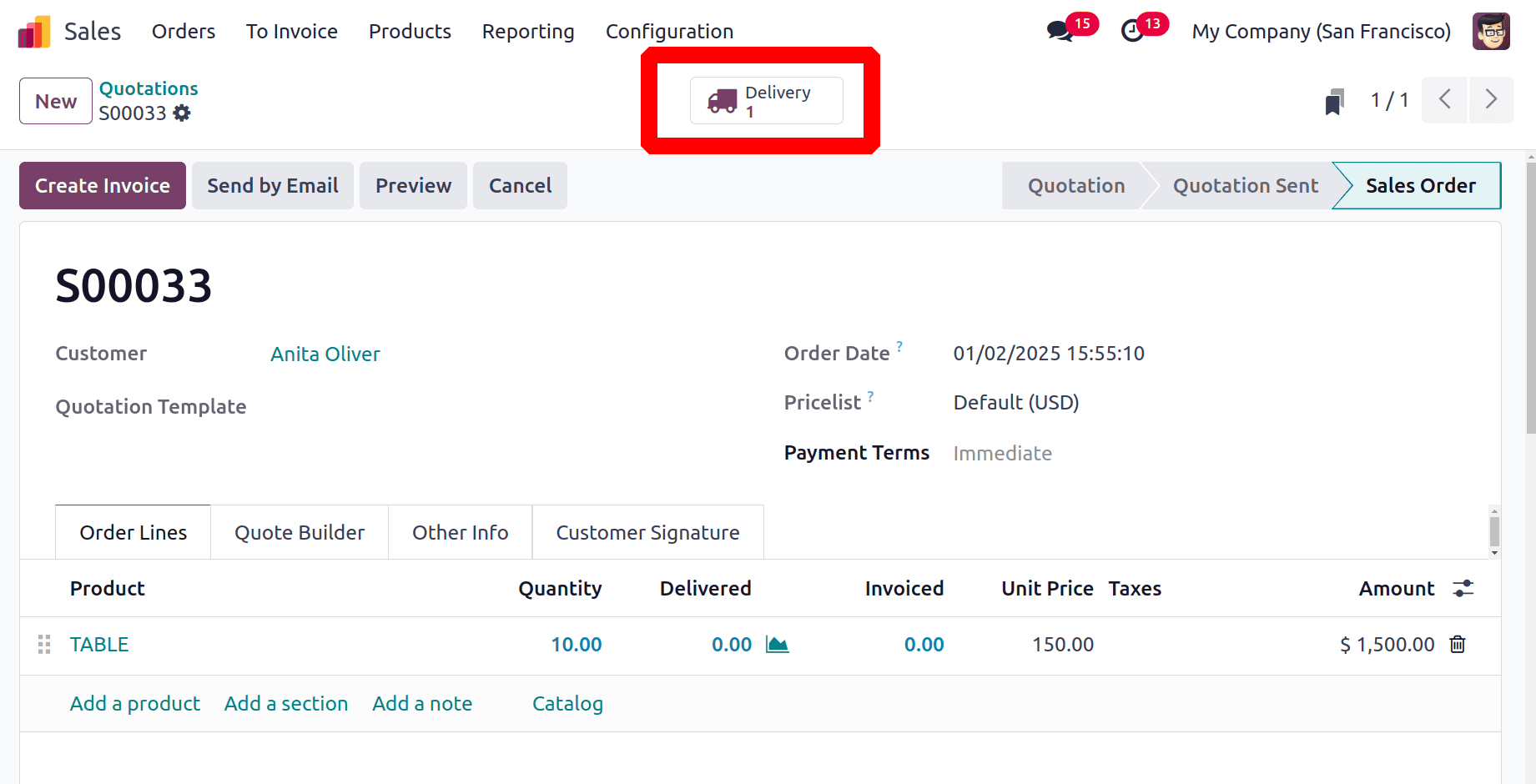
After confirmation, the sale order shows a new smart tab named Delivery. To check the delivery click on it. Then the delivery transfer will open there. Click on the Validate button to complete the delivery.
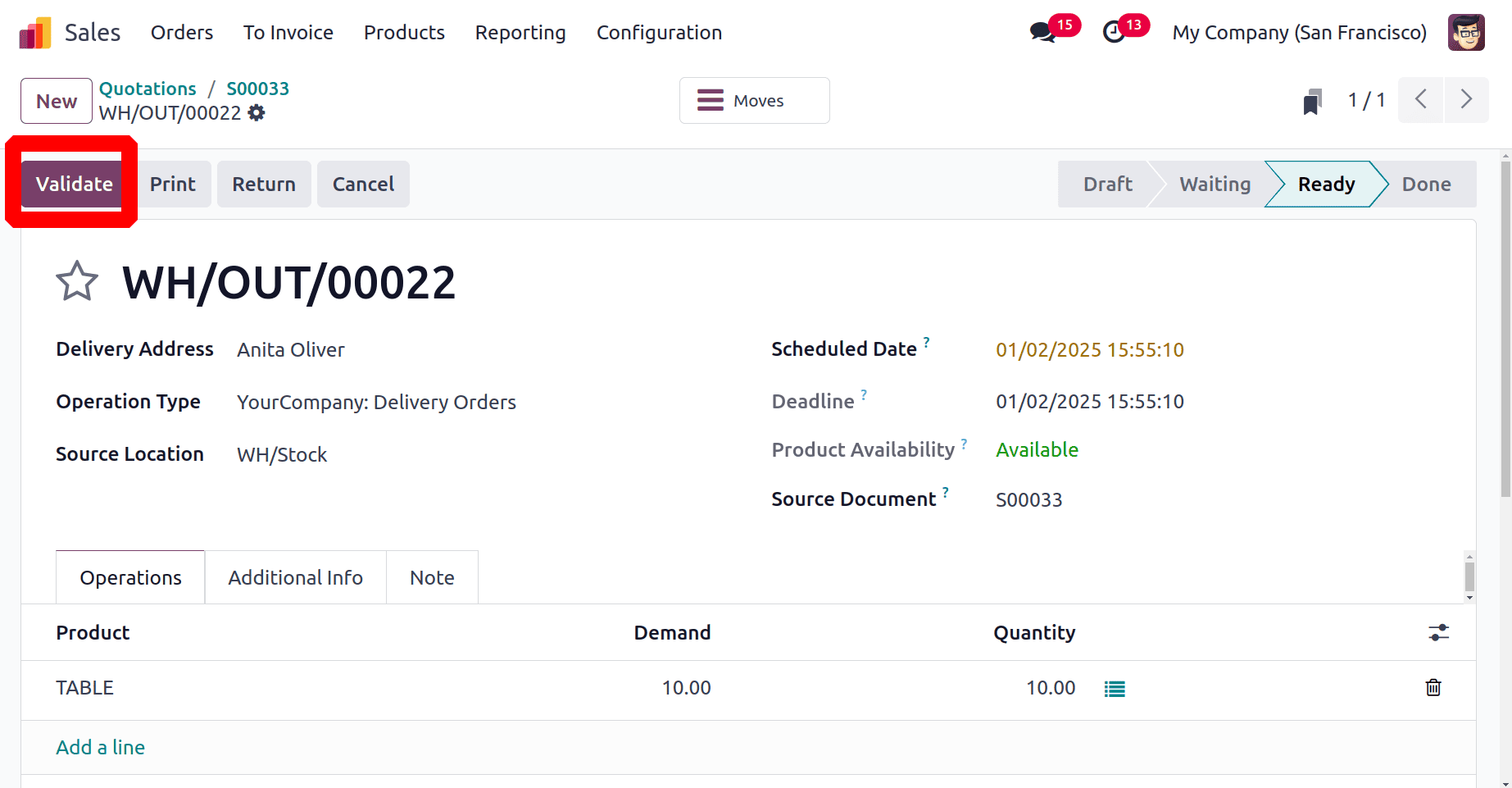
Now the delivery of goods is completed. The next step is to create the invoice for the sale. Go back to the sale order, then choose the Create Invoice button to add a new invoice.
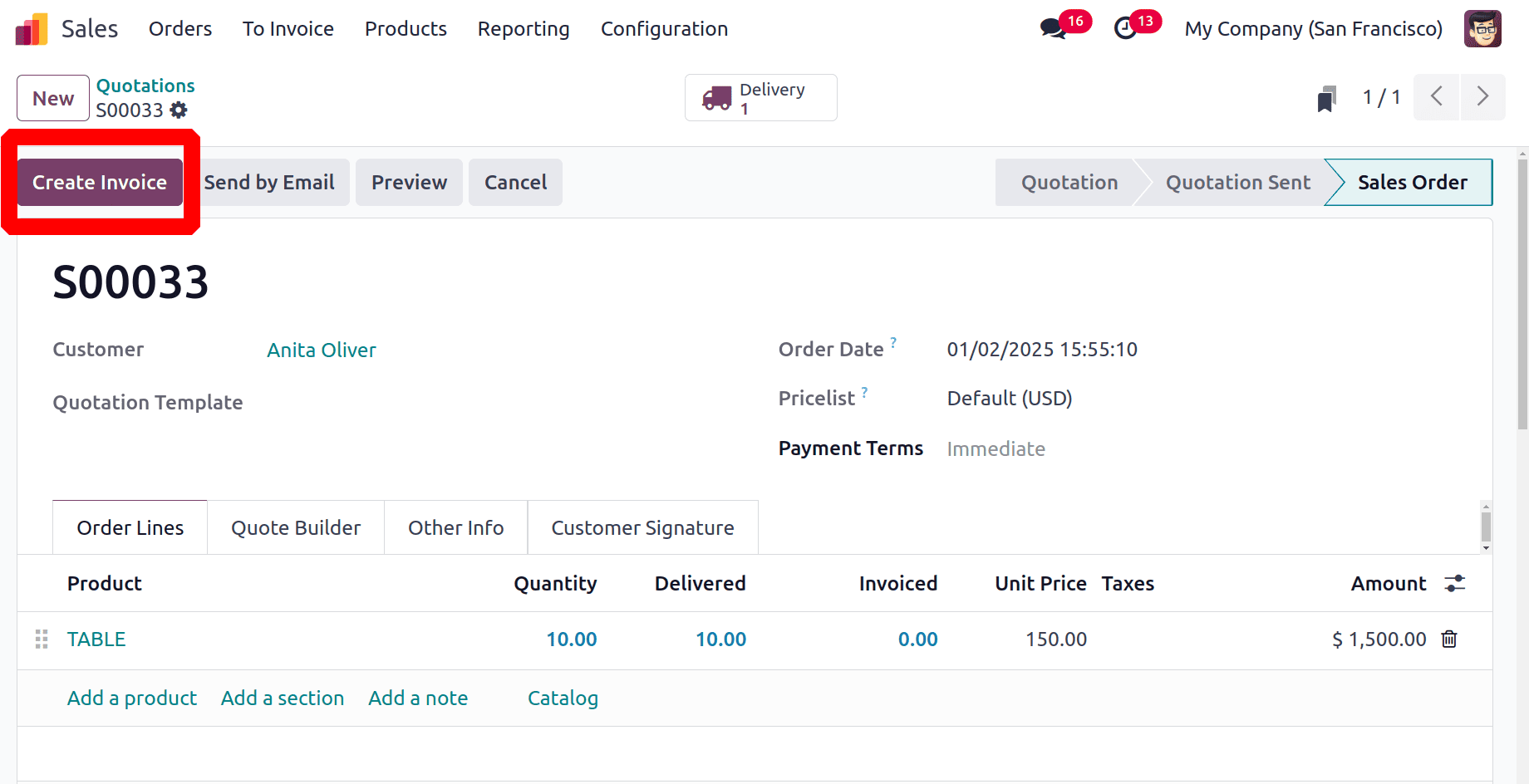
Create the invoice, then Confirm the invoice. Then click on the Pay button to complete the payment.
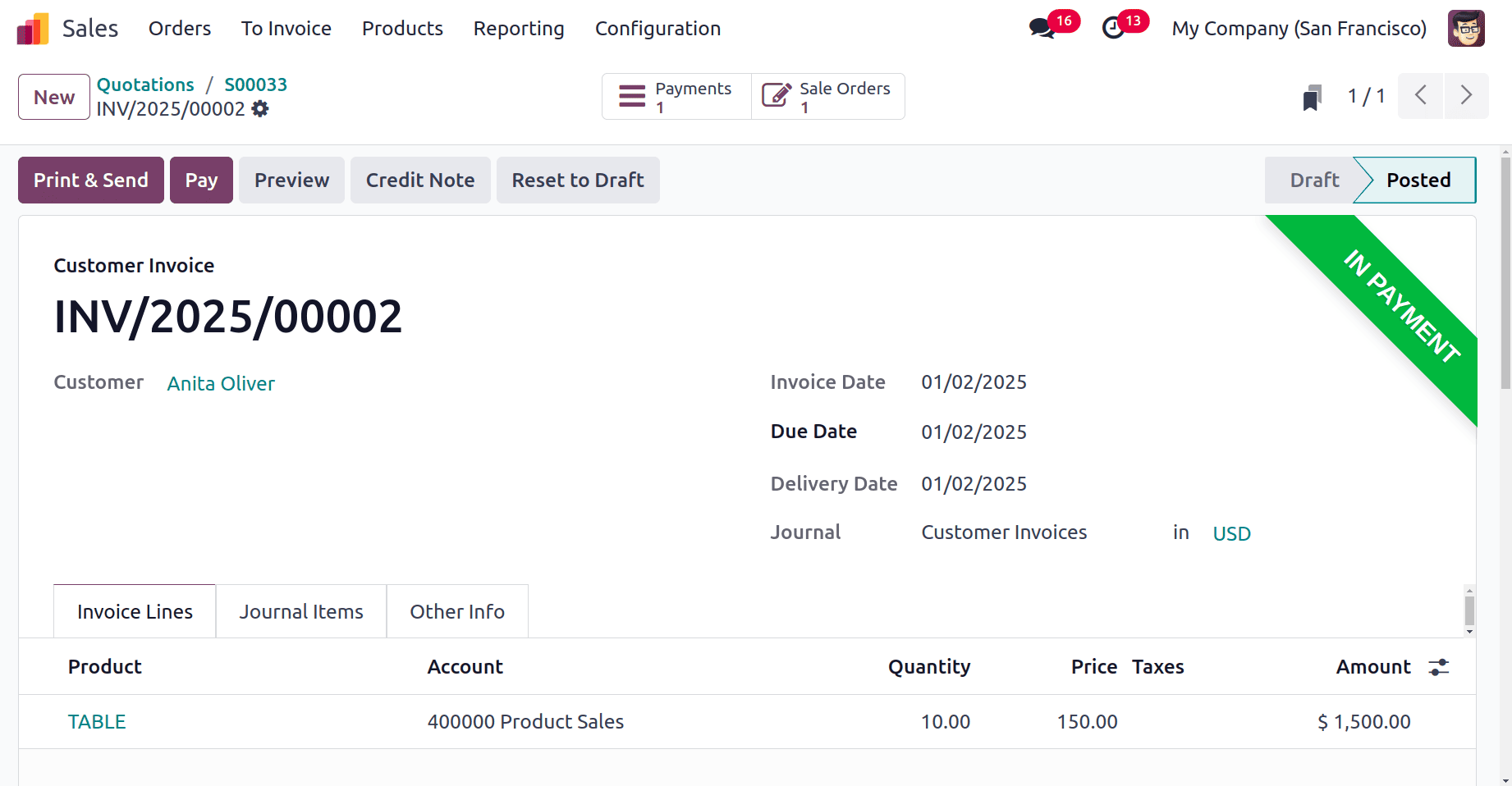
Return
So here the sale is completed. Maybe due to some reasons the customer wishes to return two quantities of product to the company. So open the delivery transfer again. The transfer contains a button named Return. To return the product to the company stock, click on the Return button
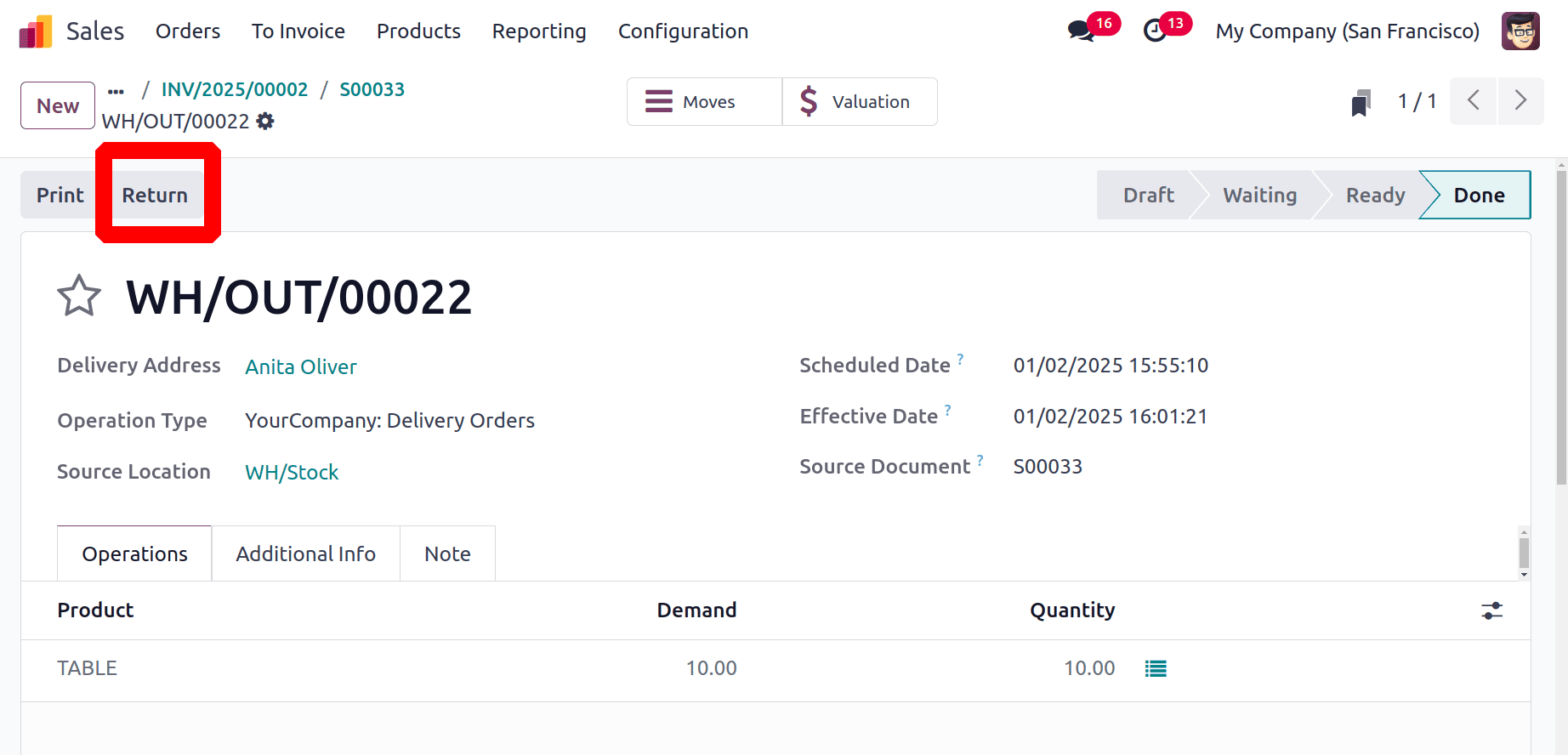
A new window will open there named as Return. Mention the quantities which the customer wished to return back to the company there. Then tick the Update quantities, which trigger a decrease in the delivered quantities in the associated sale order.
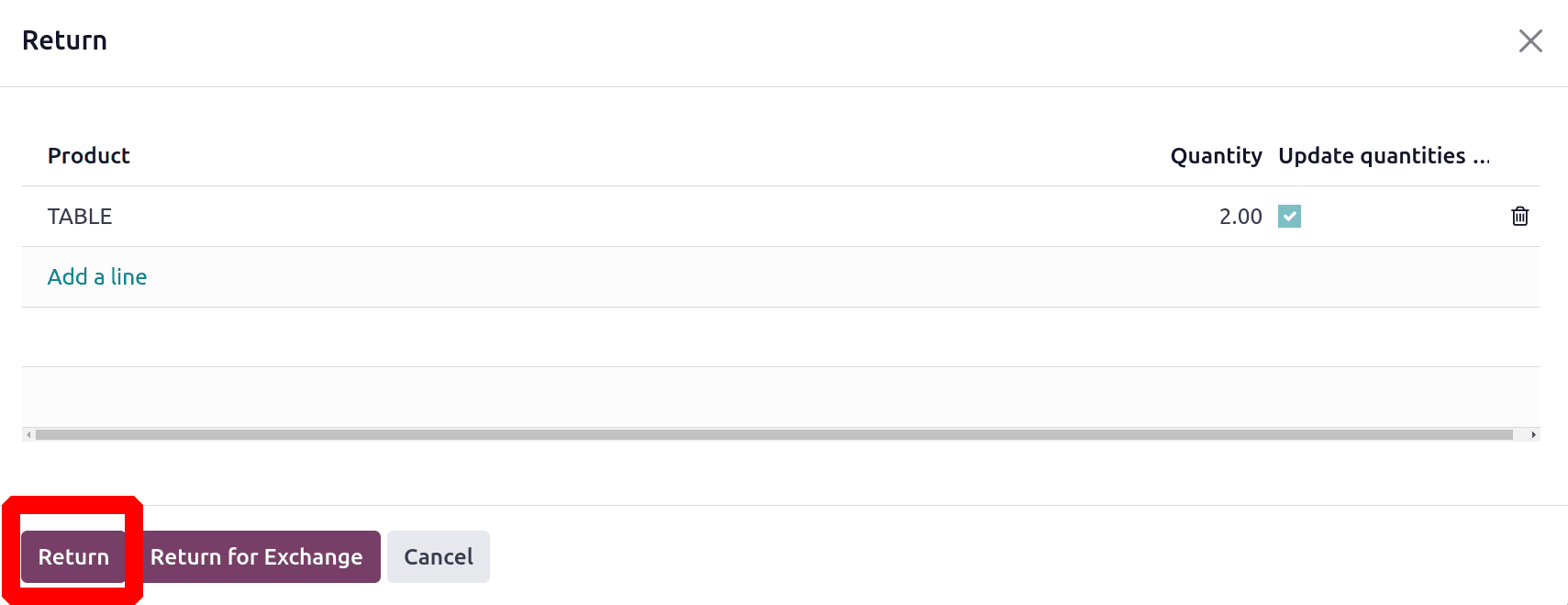
After adding such details, click on the Return button. Then a receipt for the mentioned quantities will be created there. As shown on the receipt the product is Received from the customer named Anita Oliver. And the Destination location is our company stock. Validate the transfer.
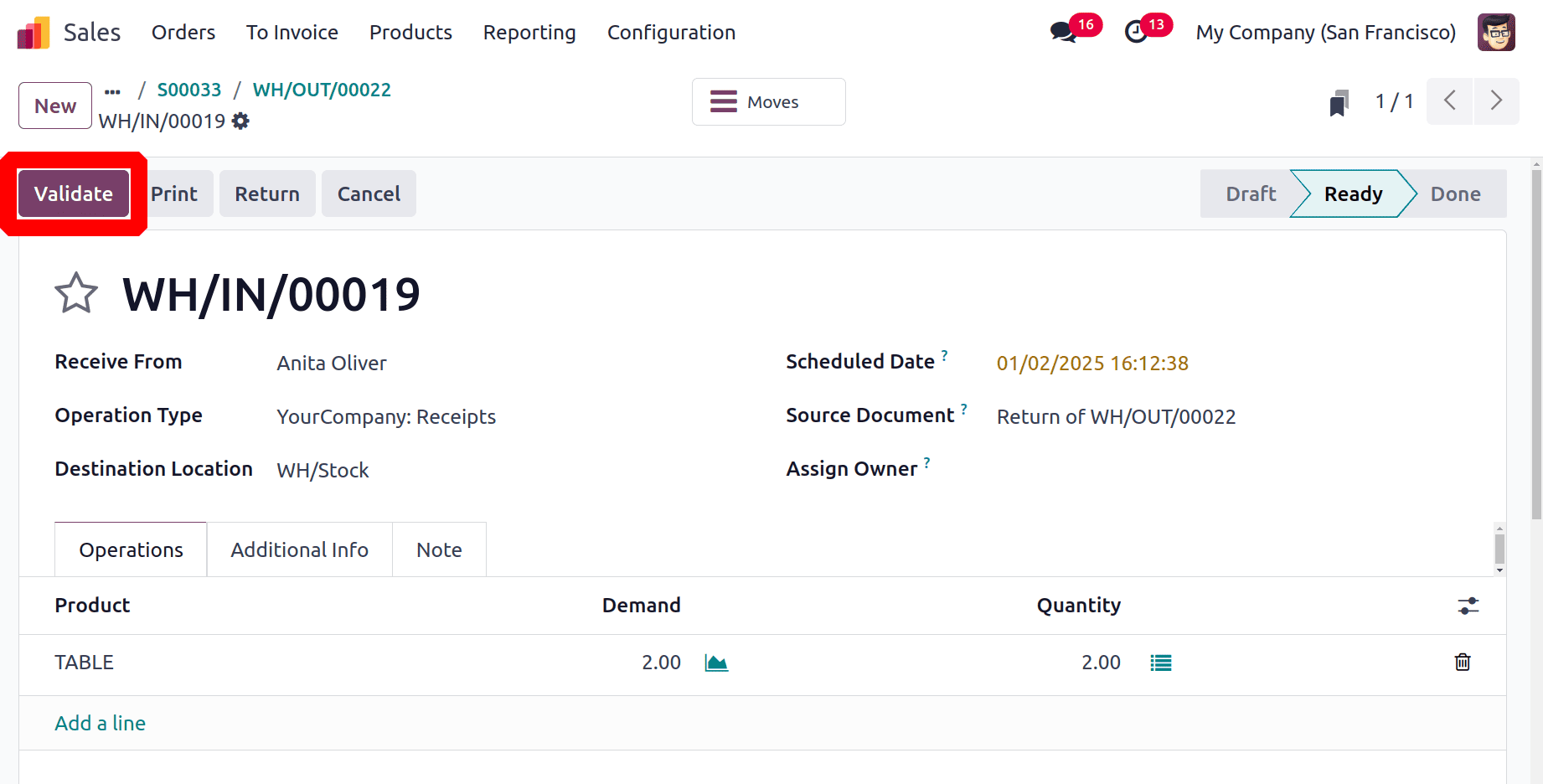
Now the product TABLE with 2 quantities is received from the customer location to the stock.
Return for Exchange
Odoo 18 introduced a replacement option instead of the return. Lets check the replacement from the same saleorder. For that again open the delivery order. And click on the Return button. The same window mentioned before will open.
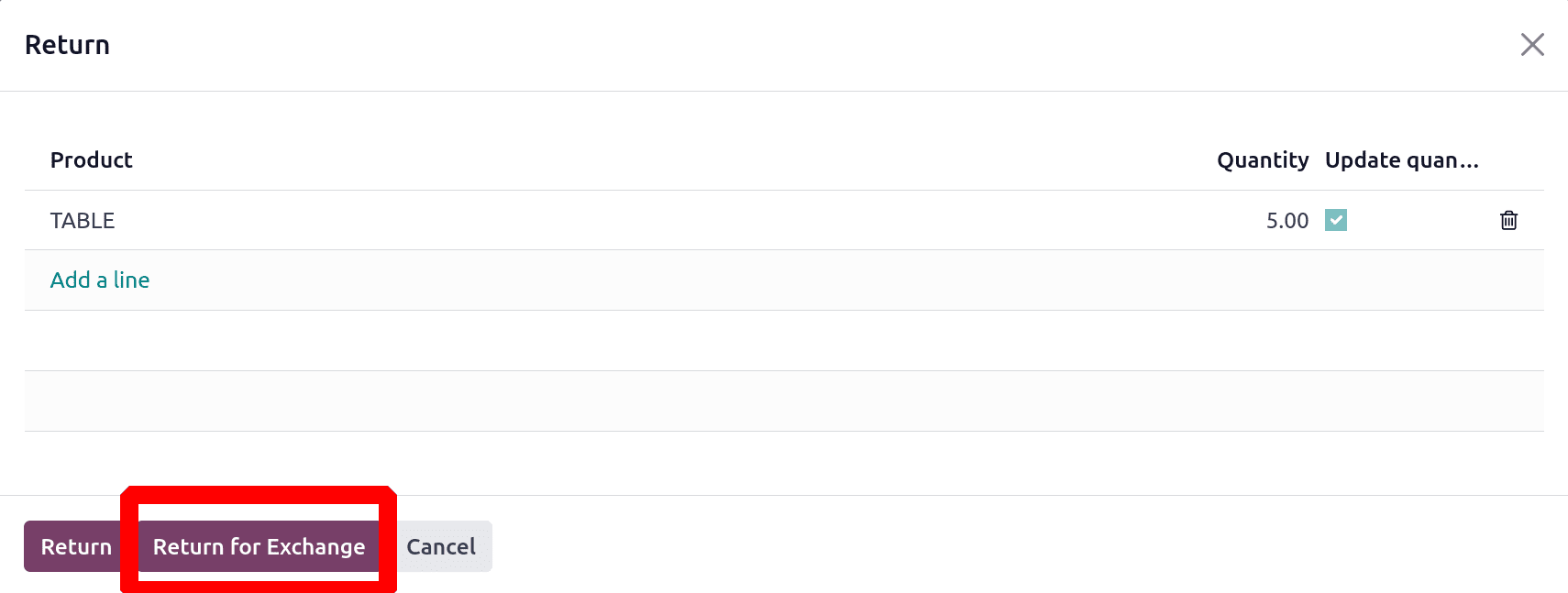
This time 5 quantities are chosen, and click on the button named Return for Exchange. As mentioned earlier a new receipt will open. So the 5 quantities of product are received to the company stock from the customer location. Validate the receipt.
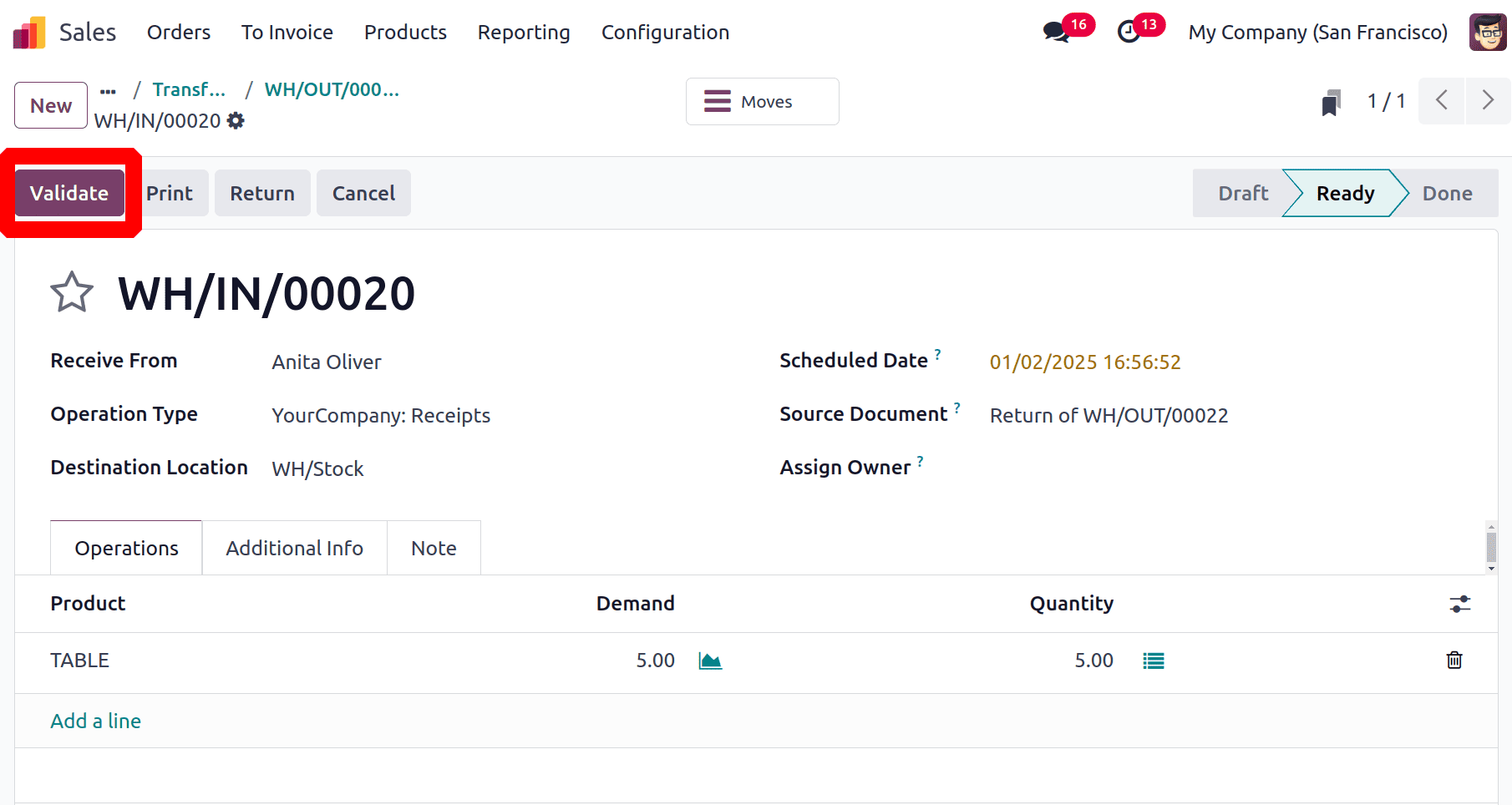
So the return is completed. Let's check the sale order again. There is a smart tab named Delivery. From there the user can view all the transfers created on this sale order. Open the smart tab again.
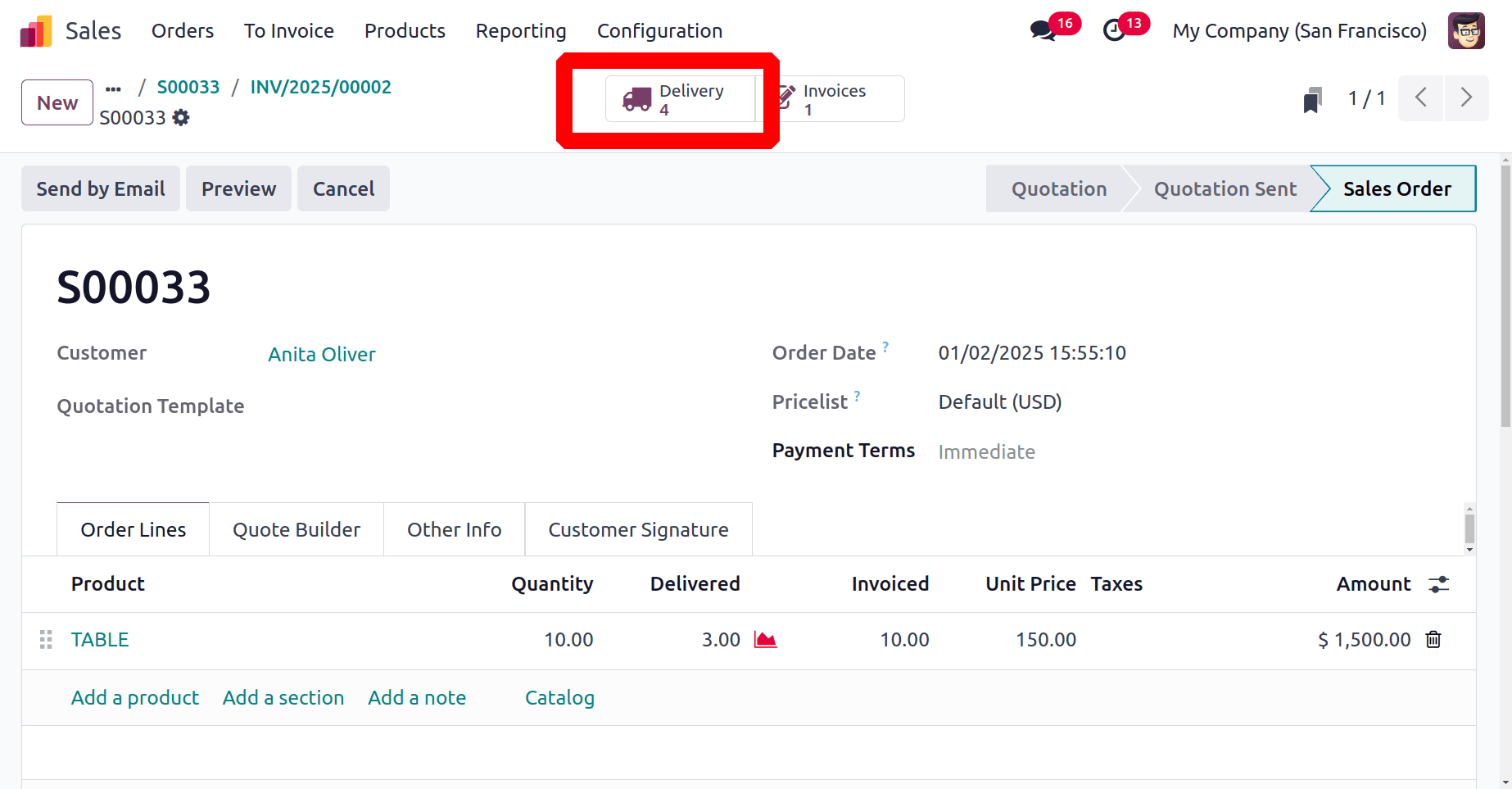
A total of 4 transfers are shown there. Two of them are delivery orders and two are Receipts. The first one is the delivery order, which is the first transfer that occurs during the sale. Which means transferring 10 quantities of TABLE to the customer.
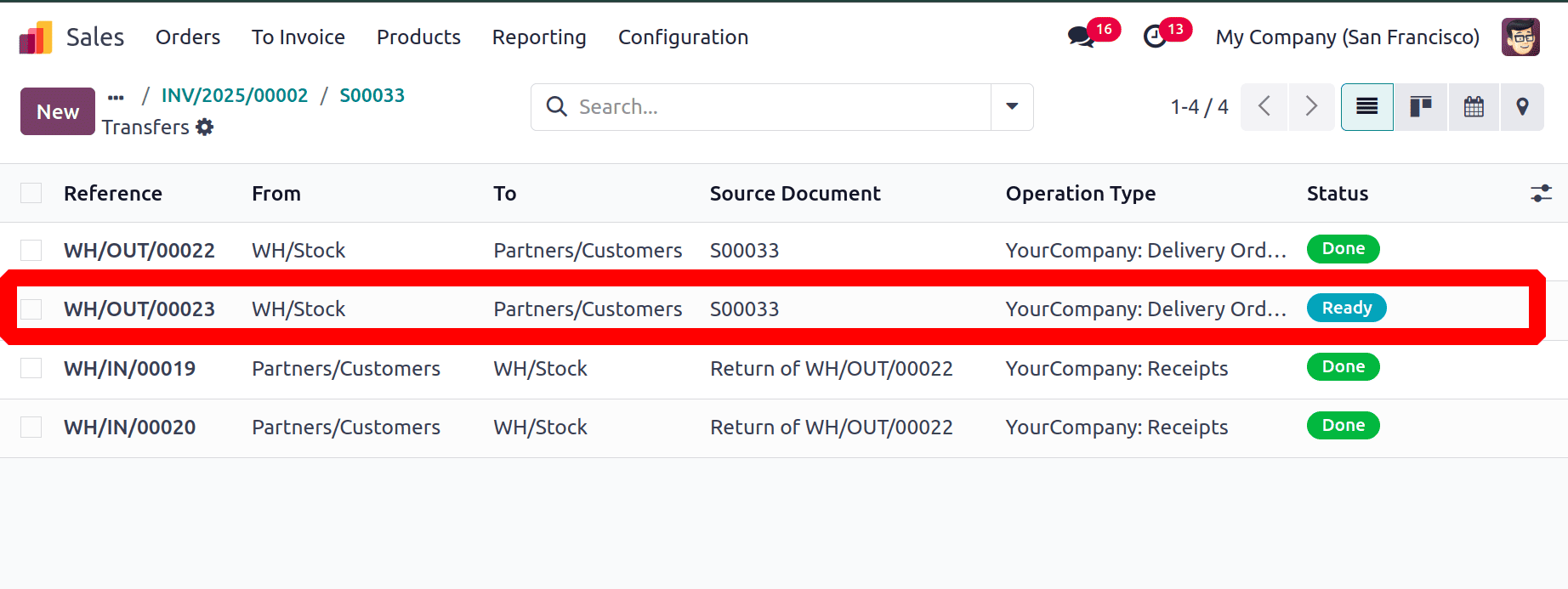
The second transfer is again a Delivery. Click on it to open. So the customer added Return for Exchange for 5 quantities. The return we validated.
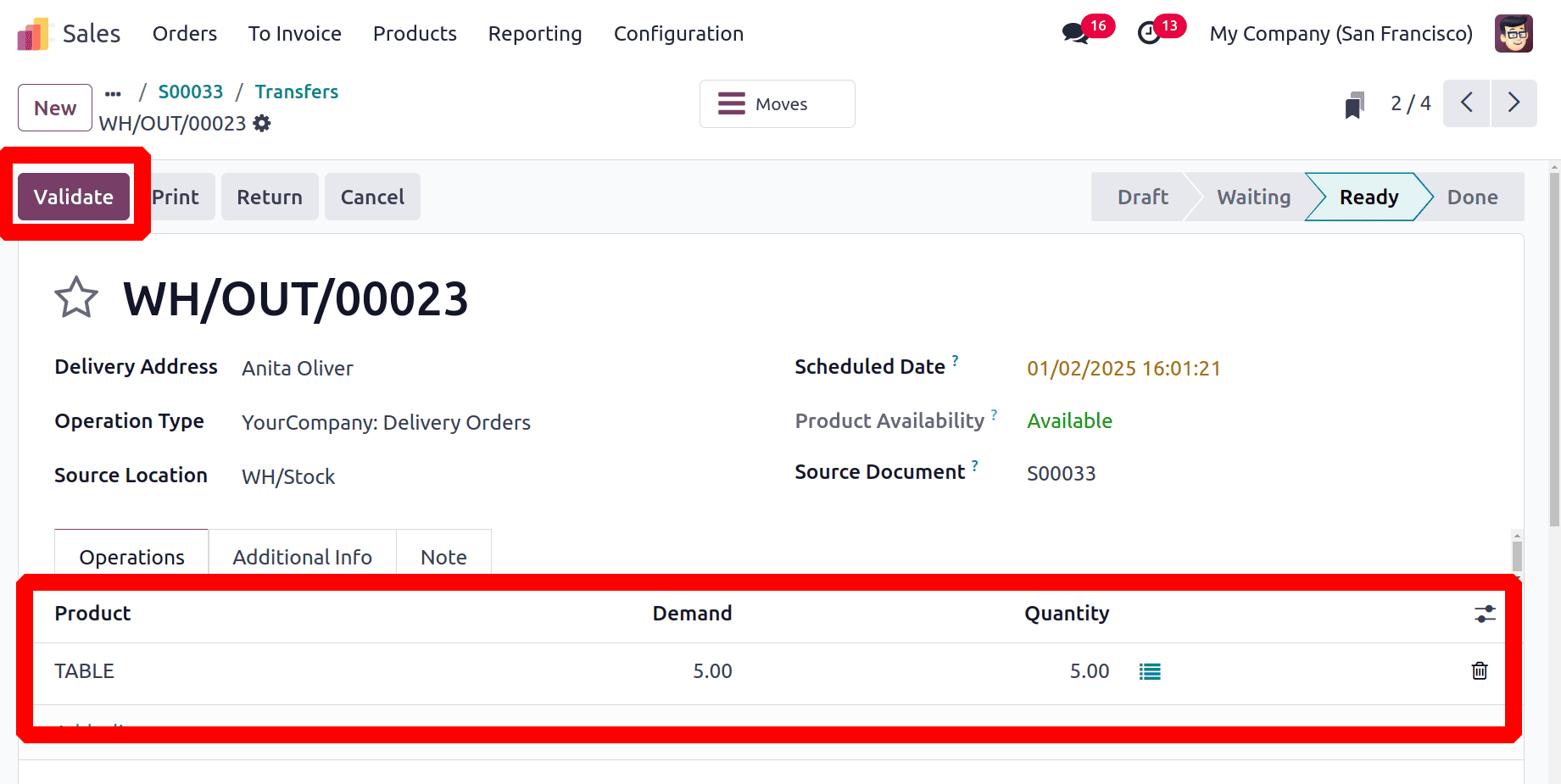
This is the delivery or the exchange order created. Here 5 quantities are added inside the orderline. The source location is company stock and the delivery address is given as customer address. Click on the Validate button to complete the transfer.
Accurate inventory management, enhanced customer happiness, and seamless operations are all guaranteed by efficiently handling sales returns and product exchanges with Odoo 18. Odoo 18 streamlines these procedures with its integrated modules and user-friendly workflows, making it a perfect fit for companies of all kinds.
To read more about How to Generate an Automatic Invoice for a Sales Order in Odoo 18, refer to our blog How to Generate an Automatic Invoice for a Sales Order in Odoo 18.